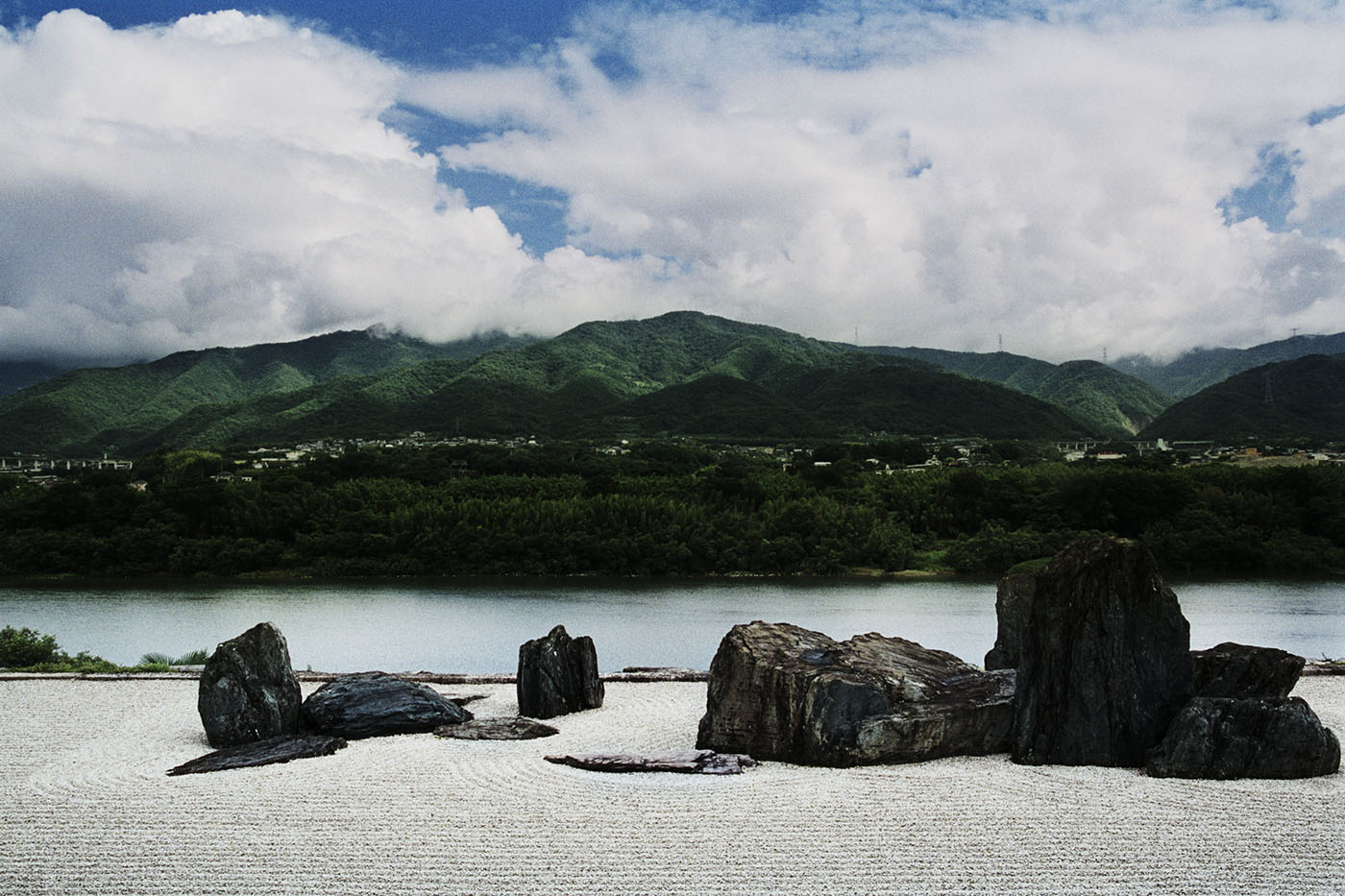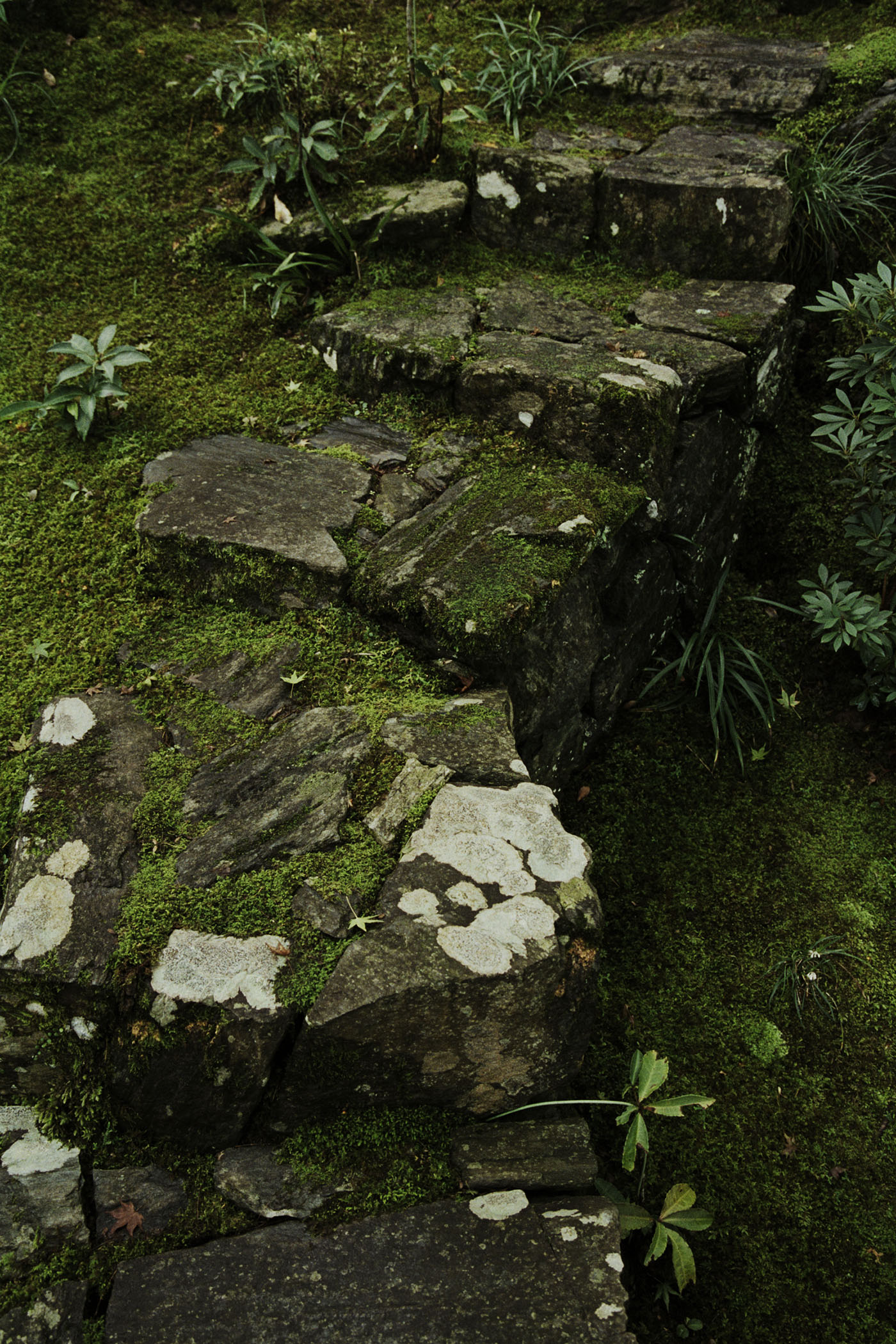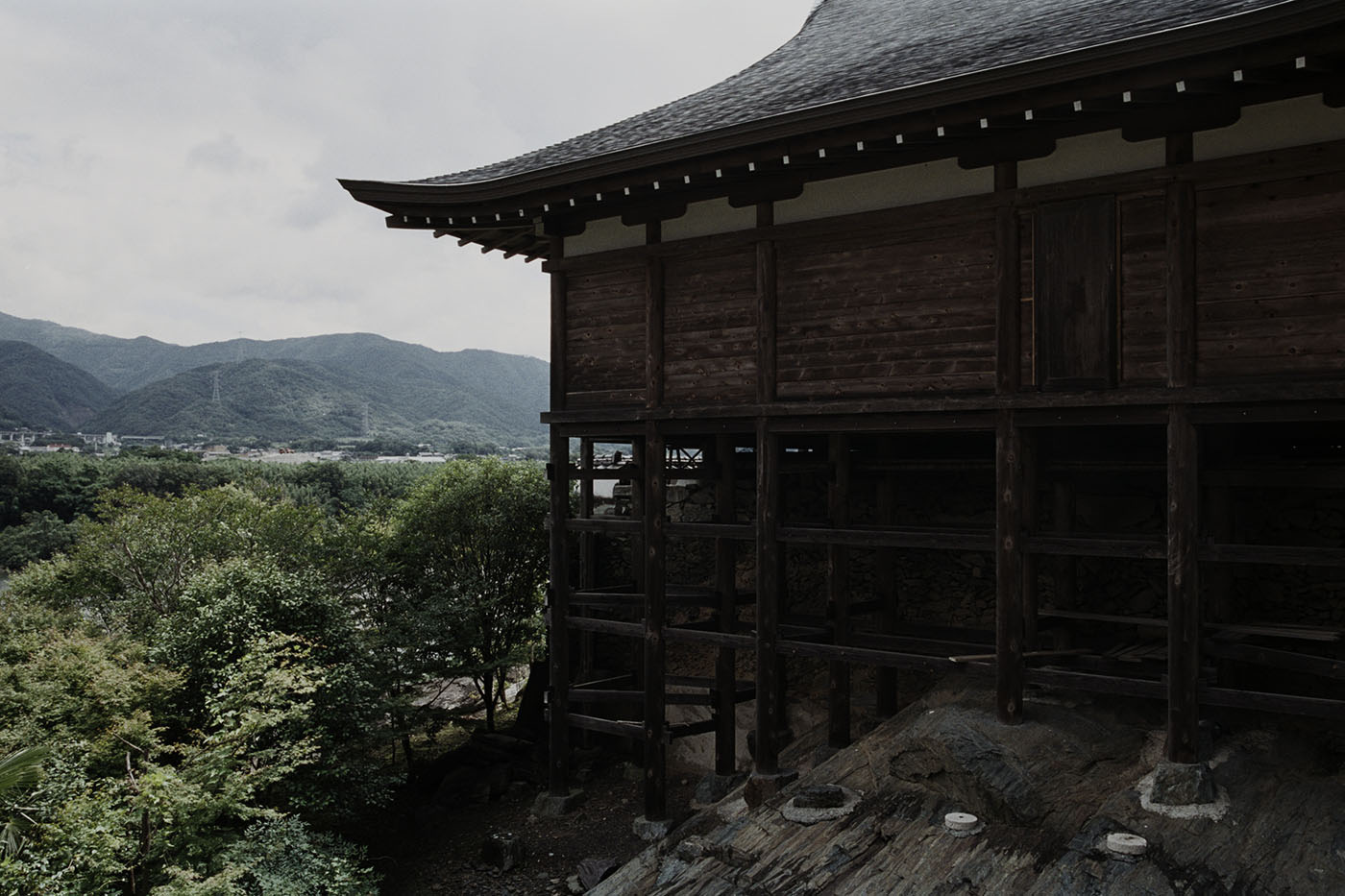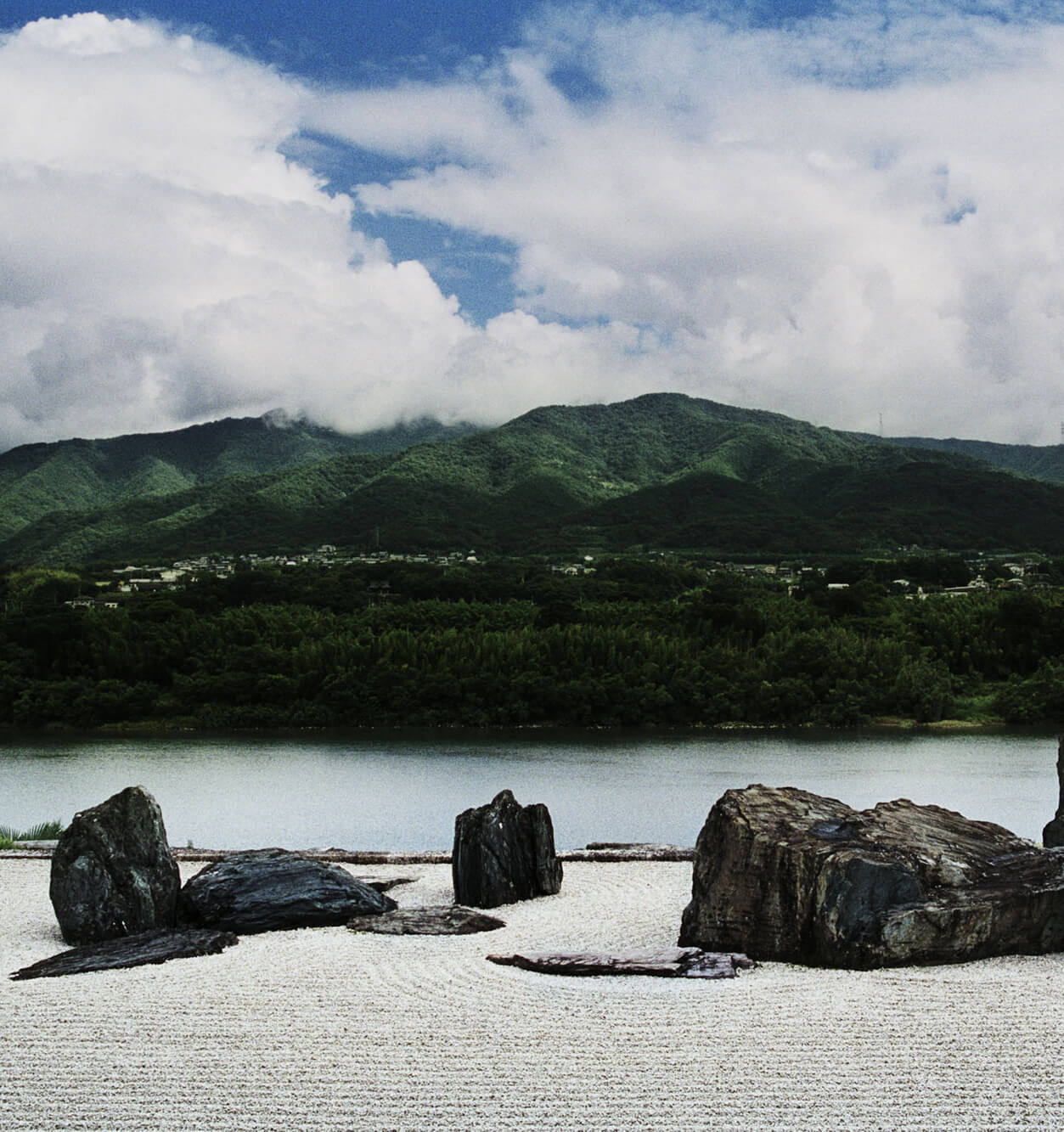DUO’S JOURNEY
Tokushima Honraku-ji Temple
Honraku-ji Temple is a Shingon Buddhist temple located on a mountain cliff wall facing the Yoshino River. This historical temple was founded in the Heian period (828). The rock garden was built relatively recently, using the Yoshino River and the Asan Mountains as its shakkei. This modern shakkei garden has an unparalleled clear composition.

Yamaguchi:
Honraku-ji Temple garden is the most recent we have photographed. The temple itself was built in the Heian period and has a long history, but the rock garden was newly made about 20 years ago on a site previously occupied by a building. The garden is located in a cliff-like area that parallels the Yoshino River at the bottom of the valley and continues to the skirt of the mountains.
In typical cases, the valley would isolate the garden from the shakkei, but this garden visualizes the isolation by using not only the valley but also the river there, making both the river and the mountains into shakkei altogether. I’ve never seen this type of situation anywhere else.
The river serves as an isolated void just like the sky above the valley. However, having a visible existence like a river as the void is a very innovative composition. By vertically viewing the overlapping layers of the parallel white sand garden, river, and mountains, a clear relationship is preserved in which none of the three elements can be missed. In fact, this relationship can’t be found in traditional shakkei gardens, where the gardens can stand even when the shakkei becomes invisible, so it was shocking to see the Honraku-ji Temple’s garden. I consider this to be a modern shakkei garden.
It seems that the viewpoint is fixed here. Are there any other findings?
Yamaguchi:
In many gardens, I feel that well-balanced attractions make things truly attractive, like having another scenic view location on the backside in addition to the main garden, for example. Honraku-ji Temple was no exception, and the backside of the shakkei garden was wonderful. Although Honraku-ji Temple is a Shingon Buddhist temple, the same esoteric Buddhism as Ninna-ji Temple, I think the garden has an abstractness just like Zen Buddhist temples.
There is also a circuit-style garden in the back, which is skillfully designed by combining moss with the exposed rock surfaces on the rocky sheer cliff of the rear mountain. It’s a beautiful place with compact trees, moss, and a waterfall. The garden on the backside, the shakkei garden on the front side, and the main hall built on the cliff and appearing bold, each has a different worldview, just like I felt at Ninna-ji Temple.

Kumon: It was quite impressive to see the garden covered with moss, which appeared natural yet was very well-kept. Also, this entire place is located on the bedrock. When viewed from the back, I was able to see the main hall is built atop a huge bedrock. The temple view was impressive, sitting next to rock eroded by the river. The garden has been expanded while repairing typhoon- and landslide-caused damages and the tea ceremony house was new.

Finally, is there a clear difference between background and shakkei?
Yamaguchi:
There’s no clear difference. One way of thinking is that shakkei plays a leading role, and a garden is composed to highlight the scenery. Some researchers argue that a shakkei garden is defined as a garden designed for viewing shakkei. As for background scenery, it’s visible from a garden but the focus is placed on the garden. However, such a difference is a difference in awareness, and making a clear distinction is difficult.
However, in the case of Honraku-ji Temple, the view of the garden would be completely different without the Yoshino River and the Asan Mountains behind it. Many gardens in Kyoto are fine even when the shakkei is no longer visible. Even when comparing it with them, I’ve never seen a garden where the relationship between the layers is as strong as this one.
In contrast to the traditional shakkei in Japanese gardens, which makes shakkei appear as if it’s there by total coincidence, Honraku-ji Temple’s shakkei creates a clear relationship by newly making the garden at this particular location. I think this is new and interesting.
Kumon: Seeing good old things in Kyoto is interesting, but the fact that the ideas of the people who create gardens persist today is also interesting. Amazingly, everything from the care of pine trees to ideas for creating new gardens has been continuously passed down up until today.
October 27, 2021
